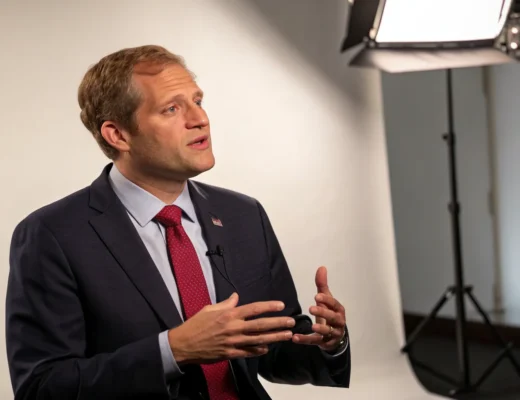President Donald Trump’s first 100 days in office have been a rollercoaster ride for the US stock market. The S&P 500 experienced significant turbulence, hitting its lowest point on April 8th due to uncertainty surrounding Trump’s trade policies. Trump’s inauguration coincided with a federal holiday when the stock market was closed.
Despite a rally on the first trading day,
Trump’s announcement of tariffs on Mexico, Canada, and China sent jitters through the markets. Wall Street analysts cautioned, highlighting the need for vigilance as markets navigated Trump’s policy decisions. The S&P 500 reached an all-time high early in Trump’s term, buoyed by hopes for economic growth.
However, as the reality of tariff implementations set in, the market quickly reversed course. The index saw a significant slide, partly due to the
impact of tariffs, leading to its lowest closing since November. Trump’s 25% tariffs on Canada and Mexico and the increased 20% tariff on China triggered uncertainty.
Many investors had assumed tariffs would be a bargaining tool rather than solidified policy. As a result, the S&P 500 slid 1.2%, erasing post-election gains and raising concerns about long-term economic impacts.
Treasury Secretary Scott Bessent attempted to calm fears, stating on CNBC that he was not concerned about short-term volatility, emphasizing the administration’s focus on long-term economic health.
Despite attempts to reassure investors, the Dow Jones Industrial Average posted its worst week since 2023, illustrating ongoing jitteriness. Trump’s first 100 days have been marked by sharp stock market highs and lows. The reality of tariff impositions and trade policy uncertainties tempered the initial optimism following his reelection.
While Trump’s administration continues to advocate for long-term economic benefits, the immediate
market response reflects significant apprehension and volatility.
Markets react to Trump’s policies
The US stock market has experienced significant fluctuations during the presidential terms of Donald
Trump and Joe Biden.
During Trump’s second term, the S&P 500 posted its third-worst performance for a presidential term in the US, only behind those of Gerald Ford and Richard Nixon. Following Trump’s re-election, the market saw a spike in anticipation of a pro-business boom. However, the president’s inconsistent trade policies, particularly the imposition of tariffs, led to historic uncertainty and volatility on Wall Street.
Sam Stovall, chief investment strategist at CFRA Research, noted, “A lot of people on Wall Street were expecting tariffs to be more rhetoric than reality. It ended up being reality. We have yet to find out what the longer-term outcome will be.”
Investment trends show that about 62% of US adults held stocks in 2024 through various means, indicating that a significant portion of the population had their finances tied to the market’s performance.
Historically, the S&P 500’s performance during a president’s first 100 days can indicate the rest of the year. As investors continue to monitor the market, attention remains on how policies and economic strategies will impact future trends. While history can guide expectations, the outcomes depend on the evolving global and domestic economic landscapes.
President Trump has made clear his intent to disrupt the prevailing economic order. In his tenure, he has provoked a trade war, scrapped treaties, and suggested that Washington might not defend Europe. Additionally, he is dismantling the governmental infrastructure that has historically provided critical know-how and experience.
Historians and political scientists agree that some of Trump’s transformations may be particularly difficult to undo. The erosion of trust and international cooperation within the United States, a resource that took generations to build, is significant. Regardless of who occupies the White House next, the conditions that fueled the “Make America Great Again” movement—widening inequality and economic insecurity—remain.
Globally, there is an ongoing concern that another leader with policies similar to Trump’s could emerge.
Image Credits: Photo by Ramaz Bluashvili on Pexels







